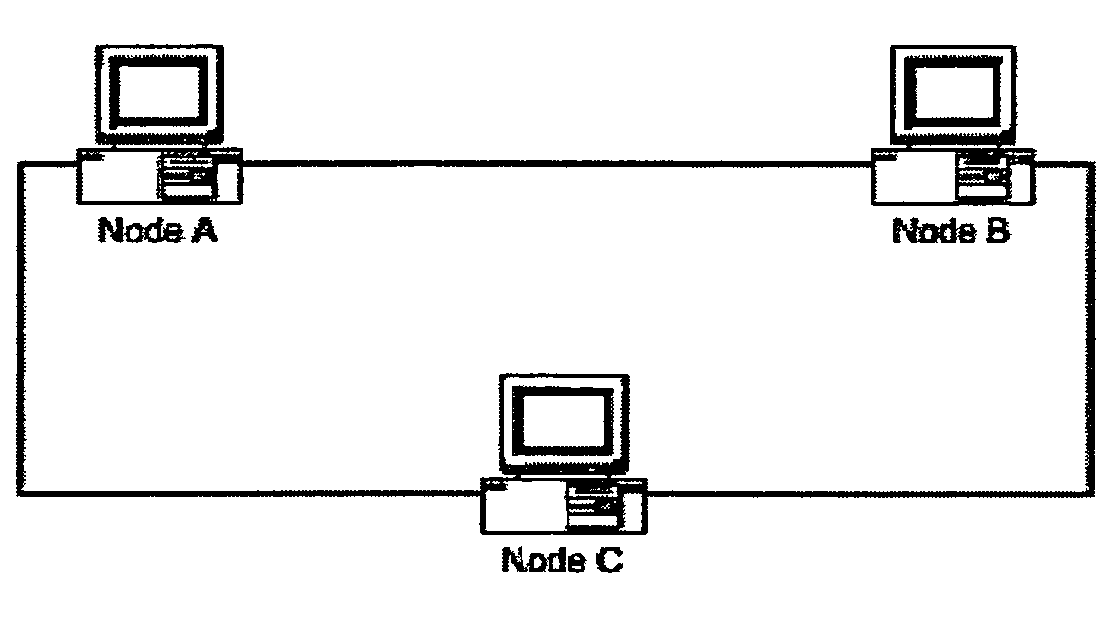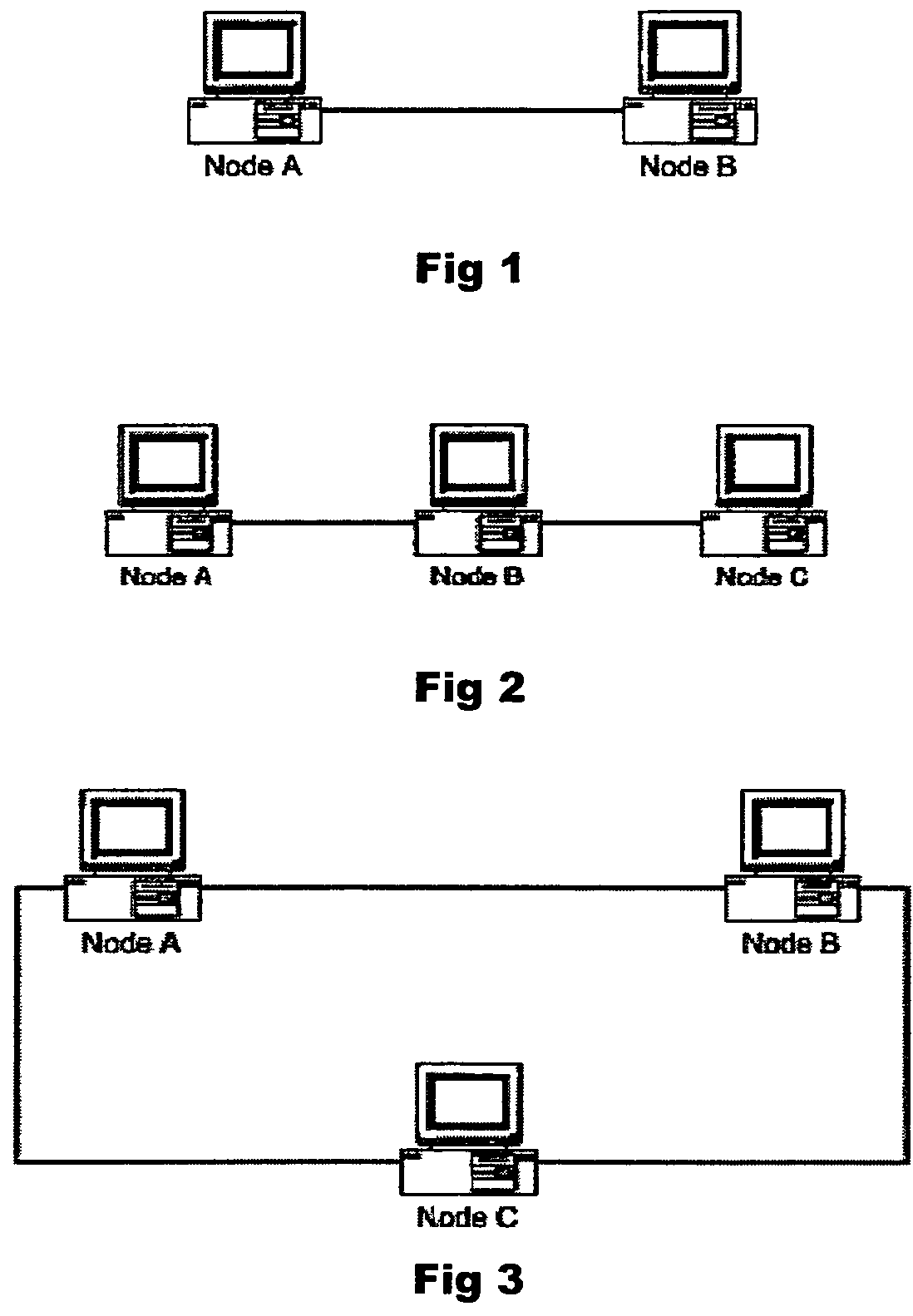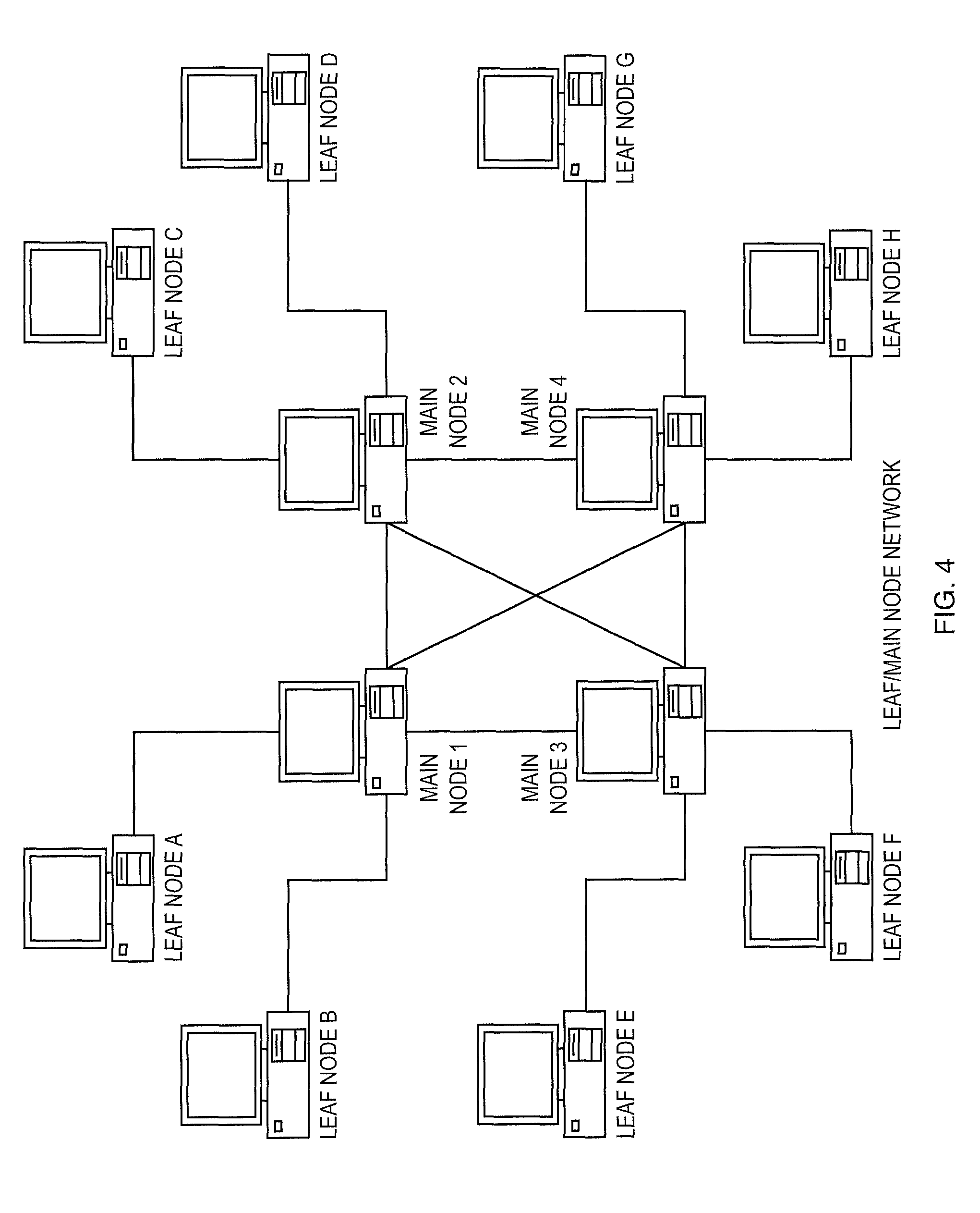System and method for searching for specific types of people or information on a peer-to-peer network
a peer-to-peer network and search system technology, applied in the field of system for searching for specific types of people or specific types of information on a peer-to-peer network, can solve the problems of information shared that may be detrimental to the user, the company they work for, or even to national security, so as to increase the chance of receiving search requests and increase the chance
- Summary
- Abstract
- Description
- Claims
- Application Information
AI Technical Summary
Benefits of technology
Problems solved by technology
Method used
Image
Examples
example 1
[0125]This example illustrates a method for responding to a request on a peer to peer network. Referring to FIG. 1, Node B is acting as a pseudonode and is configured to respond to any node issuing a search request for a file named “X.”
[0126]When Node A issues a search request on the network for a file named “X” Node B will detect this search and compare Node A's search string to its configured list of strings. Because Node A is searching for a file named “X” and Node B is configured to respond to searches for a file named “X”, Node B will send back a response to Node A that it has the file named “X” when in reality it does not. When Node A attempts to retrieve the file from Node B an error condition will result because the file does not exist on Node B. This limits data transmission and retrieval in two ways. First, because other nodes may have responded to Node A the node will have to sort through all results choosing the correct file to retrieve. This increases the time it takes ...
example 2
[0127]This example illustrates a method for responding to a request with data different from that requested. In this case Node B is acting as a pseudonode and is configured to respond to any node issuing a search request for a file named “X.”
[0128]When Node A issues a search request on the network for a file named “X” Node B will detect this search and compare Node A's search string to its configured list of strings. Because Node A is searching for a file named “X” and Node B is configured to respond to searches for a file named “X” Node B will send back a response to Node A that it has the file named “X”. When Node A attempts to retrieve the file from Node B, Node B will send a different file then what is expected. This file can be any file and its purpose is to make Node A believe that it is downloading the true file “X.” This limits data transmission and retrieval in two ways. First, because other nodes may have responded to Node A it will have to sort through all results choosin...
example 3
[0129]This example illustrates the impersonation by a pseudonode of a network node. Thus, Node B acts as a pseudonode and is configured to respond to any node issuing a search request for a file named “X.” When Node A issues a search request on the network for a file named “X” Node B will detect this search and compare Node A's search string to its configured list of strings. Because Node A is searching for a file named “X” and Node B is configured to respond to searches for a file named “X” Node B will send a response to Node A that Node C has the file named “X” when in reality Node C does not exist on the network. When Node A attempts to retrieve the file from Node C an error condition will result because Node C does not exist. This limits data transmission and retrieval in two ways. First, because other nodes may have responded to Node A it will have to sort through all results choosing the correct file to retrieve. This increases the time it takes to successfully retrieve the fi...
PUM
 Login to View More
Login to View More Abstract
Description
Claims
Application Information
 Login to View More
Login to View More - R&D
- Intellectual Property
- Life Sciences
- Materials
- Tech Scout
- Unparalleled Data Quality
- Higher Quality Content
- 60% Fewer Hallucinations
Browse by: Latest US Patents, China's latest patents, Technical Efficacy Thesaurus, Application Domain, Technology Topic, Popular Technical Reports.
© 2025 PatSnap. All rights reserved.Legal|Privacy policy|Modern Slavery Act Transparency Statement|Sitemap|About US| Contact US: help@patsnap.com



